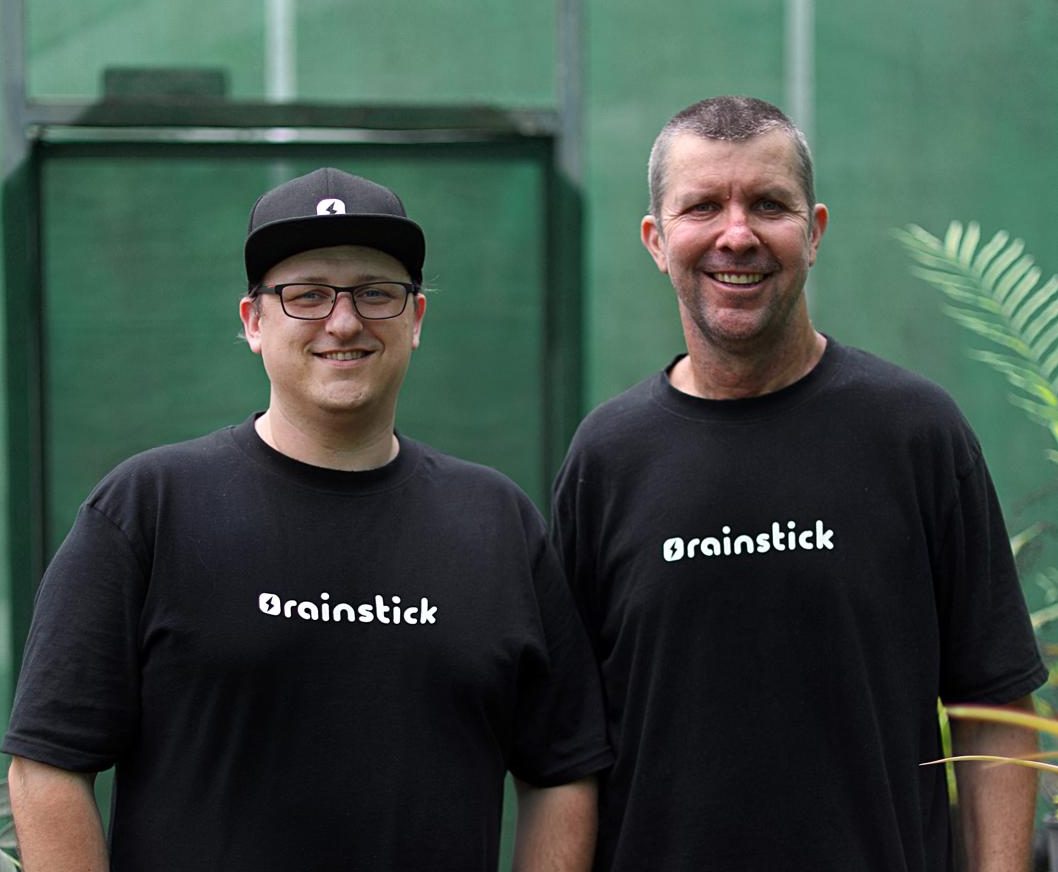Australia is a land of natural wonders, from the Great Barrier Reef and Daintree Rainforest to Kakadu National Park and the Blue Mountains. But because of the country’s naturally dry and biodiverse climate, it’s particularly vulnerable to extreme weather events that have been exacerbated by climate change. All of those wonders have been affected in recent years by bushfires, extreme heat waves, rising temperatures and floods.
Queensland is dealing with the worst flooding in history in the aftermath of Cyclone Ilsa. That’s on top of the aftermath of La Niña last year, which brought severe flooding and record-breaking rainfall to Eastern Australia. And before that, during the Black Summer of 2019 and 2020, the country lived through its most catastrophic bushfire that burned over 30,000 square kilometers of land and killed 3 billion animals. Add to this, around 90% of the Great Barrier Reef’s coral has been bleached white from rising sea temperatures.
Australia has experienced its fair share of a climate catastrophes, which has only fueled its climate tech startups into action.
The island continent is sparsely populated throughout most of its flat, dry, sunny center — referred to as the Red Centre — and has the perfect conditions to collect solar and wind energy. Large-scale solar and wind farms have spread across the country in recent years, causing renewable energy generation to increase from 16% in 2011 to 32% in 2022. Australia’s government has set a target of getting its grid to 82% renewable by 2030.
“Now there’s this perfect confluence of environmental issues, policy support and technological readiness that makes climate tech, particularly coming out of Australia, well positioned to really hit the next level of scale over the next five years,” said Jack Curtis, chief commercial officer at Neara.
But lack of capital needed to get startups to a scale-up phase could block access to Aussie innovation — an issue that is making itself known across the startup sector.
Neara works with utilities companies worldwide. It recently raised another USD$24 million to help its customers — like Southern California Edison — future-proof their infrastructure by creating 3D models to reflect and simulate how utility assets behave in the real-world environment in scenarios like drought or flooding.
The hype for climate tech in Australia is real, as long as it can be sustained. Local VCs are most excited about the sector this year, with climate and cleantech dominating in funding and deal count in Q3 2023. Startups in that sector raised $116 million in the third quarter, an increase from the $60 million invested in the segment in Q2 and $40 million in Q1, according to Cut Through Venture data. [Note: Numbers are in AUD unless otherwise stated.]
It’s been an upward trend for the past couple of years. In 2022, climate tech in Australia raised $553 million in capital, compared to $338 million in 2021, according to a report from Climate Salad, a community of Australian climate tech stakeholders. The goal was to raise another $1.5 billion this year, but the sector has fallen short due to delayed and unsuccessful capital raises, according to company co-founder Mick Liubinskas.
“We have a large number of companies that are looking at a Q1 2024 raise and more capital from international investors,” he said.
Startup founders say securing big checks is their biggest hurdle, but it’s the most important one to mount if they want to scale and survive.
To date, $435 million has been invested into Aussie climate tech startups from international investors. Recently, U.S. VCs like Lowercarbon Capital have put funds into Australian startups. The firm co-led a USD $73 million Series B earlier this year for Loam Bio, which is using microbial agriculture to capture carbon in soil. In October, the firm also invested into Living Carbon’s USD $21 million Series A, which was led by Temasek Holdings with participation from Toyota Ventures and Felicis Ventures. The biotech company creates photosynthesis-enhanced trees that grow faster to capture more carbon.
“I’m trying to bring as many international investors in here because, while the Australian investors are working hard in this space, there is more capital to be deployed here,” Liubinskas said. “International investors see it as a really great value because they’re able to get Australian dollar investments and get more reasonable valuations on some of these companies.”
About half of foreign investment in 2022 went into the agrifood sector, and 12.5% went into the circular economy. Australia’s commitment to deep tech and excellence in software-as-a-service has laid the ground for a range of companies to flourish across climate tech’s sphere, including in data and finance, renewables and carbon markets.
Aussie climate tech standouts
Gabrielle Munzer, parter at deep tech VC firm Main Sequence, said Australia’s research ecosystem is what makes its climate tech solutions so strong. Many of Australia’s scientific institutions are ranked in the world’s top 1% in over 15 fields of research, and there’s a strong connection to industries like renewable energy supply chain and food production, she said.
“When it comes to deep tech venturing, you’re drawing from what we would often describe as a fire hose of opportunity in the research sector here,” she told TechCrunch+.
Agtech makes sense for Australia, a country with a rich agricultural history and one that still makes its bones growing grains and processing meat. In 2022, agrifood companies — or startups that are involved in anything from vertical and smart farming, crops and livestock, to plant-based cellular meat, seafood, dairy and eggs — raised $262 million, or 46% of the total capital raised. The sector hoped to almost double that to raise $445 million by the end of this year 2023, but again, lack of foreign capital slowed the growth of a promising industry.
Companies like Rainstick are emblematic of the unique value proposition of Australian startups. The company, founded in 2022, was inspired by the traditions of the Maiawali People of Queensland and built on the 10,000-year-old practice of harnessing the power of lightning to cultivate certain plants.

Mic Black and Darryl Lyons, co-founders of Rainstick Image Credits: Rainstick
Darryl Lyons, co-founder of Rainstick, told TechCrunch+ that his mob were rainmakers that held ceremonies to bring in the rain and help their own green fields grow.
“Unfortunately, I don’t have a full, passed-down knowledge of that ceremony, but as I explore my cultural heritage over the last 10 to 20 years, I realize how they thrived in this really hard and dry environment, and those traditional knowledge systems played a big part in that,” Lyons said.
Lyons and co-founder Chris McLoghlin developed Rainstick’s proprietary Variable Electric Field seed treatment technology that works to increase crop yields and make crops more resilient to changes in climate conditions.
“We’re taking that traditional knowledge system — and I view it as a living system that’s not quite in the past — and we’re just using the current tools available to continue that system,” Lyons said.
Another standout is v2food, a plant-based meat company offering products with the taste and texture of meat. The startup’s burgers are used for the Rebel Whopper at Hungry Jack’s, the Aussie Burger King, and various versions of the product are available in Hong Kong, Singapore, Japan, Thailand and the Philippines.
V2food is actually a joint venture between Hungry Jack’s owner and billionaire Jack Cowin and Main Sequence Ventures, an Aussie deep-tech VC fund. Main Sequence had invested in v2food’s seed round and helped bring heavy-hitter investors Sequoia Capital China and Temasek Holdings into follow-on rounds, bringing the company’s total funding to around $185 million by 2021.
Circular economy companies, like Great Wrap — a startup that makes compostable cling wrap out of potato peels and other food waste — and Samsara Eco, which uses natural enzymes to degrade plastics and then revert them back into their original chemical building blocks, made up the bulk of Aussie climate tech companies at 20.9%. Together, they raised $191 million in 2022, with Great Wrap pulling in $11 million and Samsara another $54 million.
Goterra is a food waste startup based out of Canberra that raised a $6.5 million bridge round in 2023, bringing its total funding to $20 million. The startup uses a species of black fly to convert food waste into sustainable protein and fertilizer, creating an organic food source and putting nutrients back into the supply chain.
Olympia Yarger, co-founder and CEO of Goterra, said the company has grown this year from three sites to six sites across four states, including an airport, and is moving into the growth and scale stage of the business.
But it’s a deep-tech company, and as many Aussie startups have learned, finding the big checks needed to scale beyond Series A is challenging, particularly as a woman founder, according to Yarger.
“Overseas investors want overseas deployments, but we’re a hardware company with 7-ton robots,” Yarger told TechCrunch+. “We think there’s a lot of money in the Australian market. We understand how we can deploy here and then build the case for international expansion. But largely international funds are looking for expansion into their nation before they look at investing.”
Renewables also brought in its share of funding in 2022 at $67 million. SwitchDin, a startup that develops energy management software for solar and batteries, brought in $249 million in revenue last year, making it climate tech’s highest revenue-generating company in 2022.
Then there are the companies that deal with the harsh realities of our climate crisis. FloodMapp, a Brisbane-based startup that provides real-time flood mapping for emergency managers to reduce the impacts of flooding, scored a contract with FEMA earlier this year. The startup partnered with Waze and RISE, a U.S. nonprofit that supports climate change resilience tech, to help over 10,000 drivers safely navigate around flooded streets in Virginia in 2022.
The difficulty of scaling up
There’s an opportunity for foreign investors in Australia, whether it’s in climate tech or other industries. Investors have told TechCrunch+ that Aussies excel at capital efficiency and punch above their weight, and their down-to-earth valuations and salaries are attractive selling points.
And, of course, the risk of investors not seeing that value proposition is existential for Aussie companies.
“If you can’t scale out of Australia, it’s going to be very difficult to hit true venture expectation scale,” said Neara’s Curtis.

